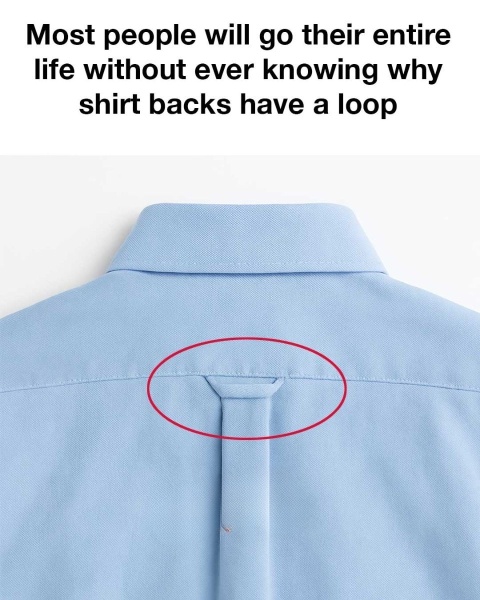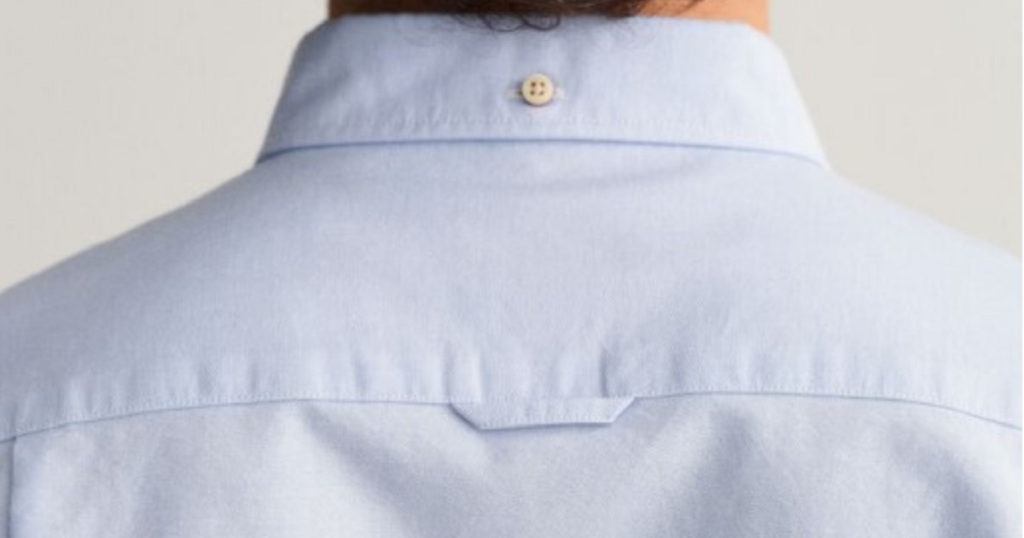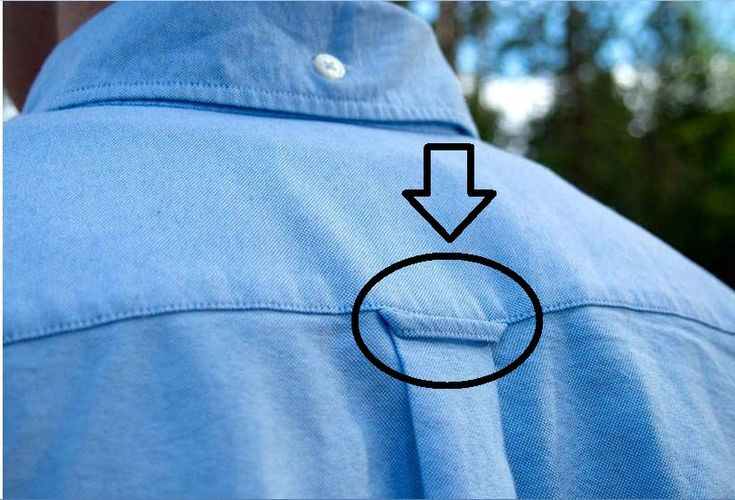You’ve likely seen it a hundred times and never thought twice. That small loop sewn into the back of your button-down shirt—right at the top between the shoulders. It’s subtle. It’s easy to miss. And yet, it’s one of the most quietly clever features in men’s fashion. Ever wondered why it’s there?
Well, you’re not alone. Most people go their entire lives without knowing the purpose of this tiny loop. But once you know the backstory, you’ll never look at your shirt the same way again. Let’s dig into the history, function, and modern-day evolution of the mysterious shirt back loop—also known as the locker loop.

The Birth of the Locker Loop: Ivy League Innovation
The story begins in the 1960s with GANT, a brand known for its East Coast prep style. At the time, college campuses—especially Ivy League schools—were flooded with students who needed a quick and easy way to hang their shirts in cramped gym lockers. Hangers weren’t always practical. Enter the solution: the locker loop.
This simple addition allowed students to hook their shirts directly onto pegs without wrinkling them or damaging the collar. It was equal parts function and flair, and it didn’t take long for other brands to follow suit. Suddenly, the locker loop wasn’t just a trend—it was a standard.
Video: Why do button-down shirts have that little loop on the back?
From Utility to Symbolism: The Loop Takes on New Meaning
Sure, the locker loop started with a simple purpose. But like many things in fashion, it didn’t stay there. Over time, it evolved from being purely practical to symbolizing status, style, and even romance.
Yes, romance.
In some college circles, there was a quirky tradition: if a guy was in a relationship, his girlfriend would remove the loop from his shirt to signal he was “taken.” No more hanging it up solo in the gym—his shirt had a new home, just like his heart. Silly? Maybe. But it gave the loop a whole new level of cultural significance.
Why the Shirt Back Loop Still Exists Today

Even though gym lockers and rigid dress codes have changed, the back loop has stubbornly remained. But why? Let’s break down the modern reasons this little loop hasn’t disappeared.
It Still Works for Hanging Shirts
If you’ve ever been in a hotel room with nowhere to hang a shirt, that loop can be a lifesaver. Toss it over a hook, doorknob, or shower rod, and you’re set. For travelers or those short on closet space, it still serves its original purpose.
It’s a Quiet Fashion Statement
These days, subtle details matter more than ever. The back loop adds a touch of refined utility, and in some cases, it’s used in contrasting fabrics or stitching to make it pop. It’s a quiet nod to craftsmanship and thoughtful design, appealing to wearers who appreciate the little things.
It Speaks to Craftsmanship
Not all shirts have back loops. But when they do, it often signals attention to detail. Brands that include them tend to focus on classic tailoring, durable construction, and heritage-inspired fashion. In other words, if your shirt has one, it might just be built to last.
It’s a Tip of the Hat to Vintage Style
Video: Why are there Loops on the Backs of Shirts? Do You Know?
The rise of vintage and retro aesthetics has brought back more than just old-school denim and leather jackets. Features like the locker loop help modern wearers connect with fashion’s past, preserving elements that made classic menswear so iconic.
Drying Shirts the Smart Way
This one’s for the laundry enthusiasts. Hanging your shirt by the loop after washing allows it to air dry more evenly without damaging the shoulders—something that can happen if you use the wrong hanger. It’s a simple trick with solid results.
Designers Are Reinventing the Loop
In today’s fashion landscape, designers love to reinvent old ideas. Some brands are placing loops in unexpected places—like the side seams or even near the hem. Others use bold colors or patterns to turn the loop into a standout accent. Whether purely decorative or fully functional, it’s found new life in a variety of forms.
Cultural Curiosities and Fun Facts
Let’s take a second to appreciate just how weird and wonderful fashion traditions can be:
- The “Girlfriend Loop Rule” in college circles may be outdated, but it’s still a fun part of Ivy League fashion lore.
- Loop colors were once used in uniforms to denote rank or team affiliation in certain factories and industrial settings.
- Some brands now use recycled materials for their loops, tying sustainability into even the smallest details.
A Feature You Didn’t Know You Needed

Next time you’re buttoning up a crisp oxford or folding laundry, glance at that little loop on the back. It might seem insignificant—but it tells a story. Of clever design. Of campus culture. Of thoughtful craftsmanship and timeless detail.
It’s not just a piece of thread. It’s a thread woven into the fabric of fashion history.
Conclusion: Tiny Detail, Big Impact
The shirt back loop may be one of the most overlooked features in clothing, but its story reveals a lot about how fashion blends practicality with personality. From locker rooms to runways, it’s proof that even the smallest design elements can carry weight—and history.
So the next time someone asks about that little loop, you’ll be the one to say: “This? Oh, let me tell you…”


